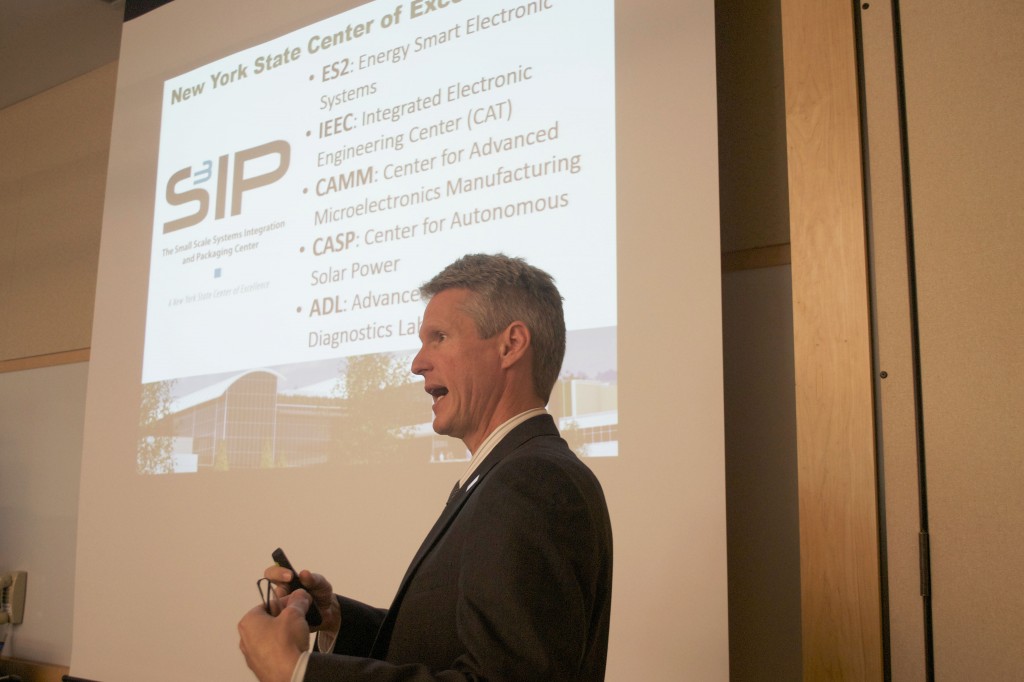
Binghamton University officials hope to one day turn the city of Binghamton into a “college town” and make it a place for students to work and live after graduation.
On Thursday, SUNY BEST (Business and Education Cooperative of the Southern Tier) hosted the second of a three-part event series discussing the importance of establishing a relationship between the University, local businesses and students to create a “college town.”
The event featured speakers Per Stromhaug, assistant vice president for Innovation and Economic Development, and Brian Rose, the vice president for Student Affairs.
Stromhaug explored BU’s current entrepreneurial and research efforts to connect with the city of Binghamton, while Rose analyzed changes in young-adult lifestyles and how Binghamton could appeal to them.
Stromhaug emphasized the creation of an “entrepreneurial ecosystem” in which graduates stay in Binghamton after graduation by way of graduate school, internships or jobs at both local businesses and larger corporations.
“You need students to come here, you need students to stay here and you also need entrepreneurs to come here,” Stromhaug said. “Think local, act locally to make this happen.”
Rose discussed popular trends for 18- to 33-year-olds and what exact measures could attract them to live, work and study in Binghamton.
“Seventy-seven percent of young people plan to live in urban centers,” Rose said. “And one of the greatest predictors for economic success is the number of college graduates that you have in your community.”
According to Thomas Kowalik, event organizer and the director of the Center for Innovative and Continuing Education, the creation of the University Downtown Center has already helped revitalize an urban core.
“I think the idea that we’ve connected with this sort of concept of a ‘college town’ has really sparked a lot of interest in the community,” Kowalik said. “With President Harvey Stenger, the vice presidents and leaders of the campus, we are really making great strides in forging collaborative relationships between the University, the Downtown area and other parts of the region.”
Janice Cheng, an alumna and accepted graduate student of public administration for the spring semester, said that connecting students to the local area was important.
“It’s hard for Binghamton University because it’s so isolated, and the students are sort of too confined to campus because of the transportation issues for them to be actively engaged in the community of Binghamton,” Cheng said. “I think it’s important for students to come here for school but also for life.”
According to Stromhaug, efforts are already underway with local businesses, government and larger corporations to transform Binghamton. These include expanding the student body population and graduate school program, opening the School of Pharmacy and Pharmaceutical Sciences, welcoming large corporations for programming competitions and partnering with START-UP NY.
“[Becoming a college town] is a potential claim-to-fame for Binghamton,” Kowalik said, “so it’s something we really need to be working towards.”


